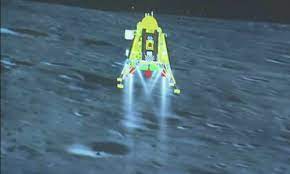NEW DELHI (Agencies): India’s first space-based observatory to study the sun is to be launched on September 2, weeks after it became the first country to land a spacecraft on the unexplored south pole of the moon.
Monday’s announcement by India’s space agency said the Aditya-L1 probe will study solar winds, which can cause disturbances on Earth and are commonly seen as auroras. The craft, named after the Hindi word for the sun, will be launched from the country’s main spaceport in Sriharikota using the PSLV launch vehicle, which will travel about 1.5 million km (932,000 miles), the agency said. It will take the Aditya-L1 about four months to travel to its observation point, the Indian Space Research Organisation (ISRO) said in a post on X, formerly Twitter.
The spacecraft will be fired into a halo orbit in a region of space that will give the craft a continuous clear view of the sun. “This will provide a greater advantage of observing the solar activities and its effect on space weather in real time,” ISRO said. The spacecraft will be carrying seven payloads to observe the sun’s outermost layers – known as the photosphere and chromosphere – including electromagnetic and particle field detectors.
NASA and the European Space Agency have previously placed probes into orbit to study the sun, but this would be the first such mission for India. The unmanned Chandrayaan-3, which means “mooncraft” in Sanskrit, touched down on the lunar surface last week, making India only the fourth country to land successfully on the moon, behind the United States, Russia and China.
That marked the latest milestone in India’s ambitious but cut-price space programme, sparking celebrations across the world’s most populous country. India has a comparatively low-budget space programme but one that has grown considerably in size and momentum since it first sent a probe to orbit the moon in 2008. It’s latest moon mission had a budget of about $75m – less than that of the Hollywood space thriller Gravity.
Experts say India can keep costs low by copying and adapting existing technology and having an abundance of highly skilled engineers who earn a fraction of the wages of their foreign counterparts. In 2014, India became the first Asian nation to put a craft into orbit around Mars, and it is slated to launch a three-day crewed mission into Earth’s orbit by next year. It also plans a joint mission with Japan to send another probe to the moon by 2025 and an orbital mission to Venus within the next two years.







